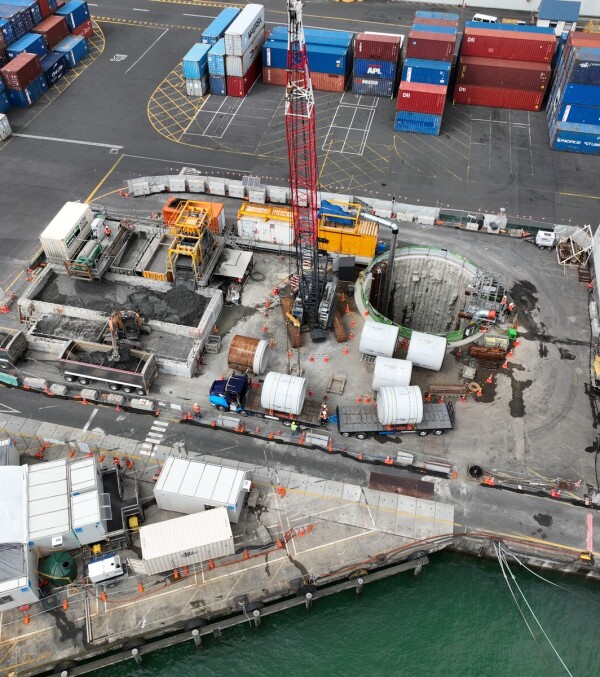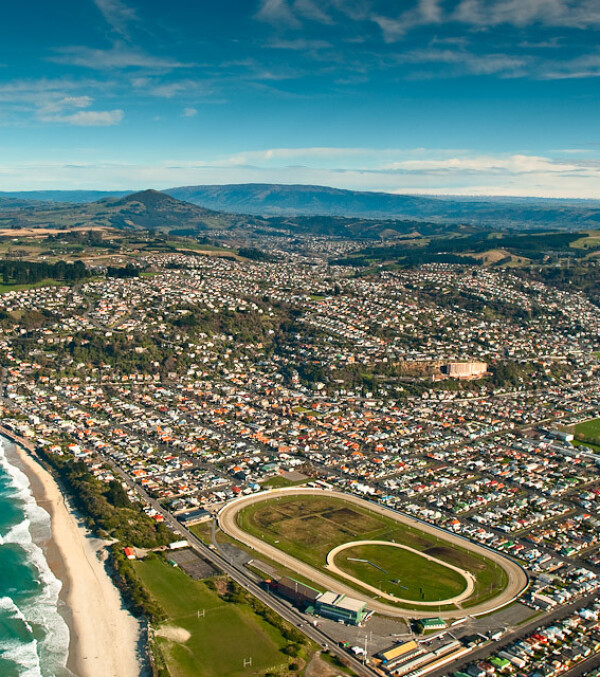|
Customer: Auckland Council Healthy Waters Contract: Construct Location: St Marys Bay, Auckland
|
Fast Facts
|
Limiting our construction footprint was a key part of our delivery approach for the St Marys Bay Area Water Quality Improvement Project in Auckland.
Now complete, this Auckland Council Healthy Waters project reduces the frequency of releases of stormwater overflow into the Waitematā Harbour by 95%. It provides storage in the form of a 1.8 m diameter, 2 km long underground pipeline, and a new 450 m long ocean outfall. Stored water is pumped back into the sewer network when there is capacity. Discharged water is released far away from places where people swim.
The project was a construct only contract, with the pipeline designed by Aurecon. However we designed the outfall ballast blocks and the marine piling operation.
The most significant challenge the project faced was the location of the new stormwater pipeline under some of the oldest, narrowest and most densely populated streets in Auckland.
The alignment runs beneath Point Erin and alongside the large Pohutakawa trees that grow on the cliff face from the park up to London Street and beneath a residential neighbourhood.
The tunnelling itself did not create noise or vibration levels that disturbed the neighbours and the team kept noise and vibration impacts from the piling to a minimum.
Using a slurry TBM and locating the separation plant in Point Erin Park as far away from stakeholders as possible also meant the team needed to manage slurry lines up to 1100m long.
Protecting the nearby marine life while dredging and installing the marine section of the pipeline was also important to the project team.
The Solution
Our in-house team came up with creative shaft designs to limit the site footprints and ensure they were strategically located.
Planning the delivery and access for large machinery including the TBM was critical as the streets are narrow and steep and one shaft was required at the entrance to a cul de sac.
Construction sequencing was also planned in detail to help minimise the diameter of each shaft. Once tunnelling was complete the team deconstructed the TBM underground and brought it to the surface in three pieces. This meant the London Street shaft could be reduced from 10m in diameter to three metres, lessening the impact on access around it.
The shafts were also be constructed using auger drilling methods, the machinery located as far from properties as possible and controls like noise walls and monitoring helping further minimise noise and vibration.
We maintained the tunnelling spoil stockpile away from urban stakeholders at Point Erin, so they could be moved from the site during off-peak hours. Traffic interruptions were also reduced by scheduling pipe and other major deliveries outside peak travel times.
The Key to Success:
We were committed to minimising disruption to neighbours during construction and protecting the environment. The temporary works for each shaft site were designed to fit inside steep constrained sites and the spoil from the construction and the separation plant located at the main worksite in Point Erin Park, to lessen impacts on the surrounding community as much as possible.
The purchase of a bespoke Herrenknecht AVN TBM to maximise face support, minimise ground movements, water drawdown and prevent settlement also lowered the risk profile.
Using a method, we have implemented successfully on another outfall project, the marine pipeline was constructed at a coastal site on the Firth of Thames. Once complete, it was towed to Auckland, floated into position and then lowered onto a prepared trench on the sea floor.
By reducing the amount of time we spend on the harbour constructing the marine section of the pipeline and on the sea floor dredging and installing it, disruption to marine life was kept to a minimum.










